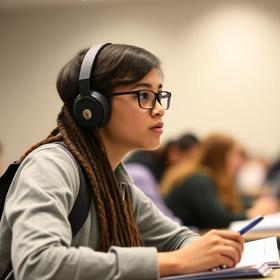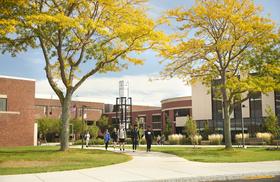The good news is that more Latinos are headed to college today, whether they set their sights on a two-year or four-year institution. The bad news is that despite their lofty goals, many Latinos won’t make it to college completion. Some may face serious obstacles just getting into the door of higher education. With the Hispanic population increasing across the county, it may be up to community colleges to change the tide and provide the necessary training to reach their full earning potential.
First, the Good News
NBC Latino reports that a record number of Latino students are heading to college today. According to a recent Pew Hispanic Research Center analysis, seven out of every 10 Latino high school students enrolled in college in 2012. That number is higher than the rate of both white and black high school students. The dropout rate for Latino students was also cut in half – from 28 percent in 2000 to 14 percent in 2011.
According to the researchers who conducted the analysis, several possible factors could be attributed to the increase. First, Latino students may find that heading off for more education is more productive than searching for employment in a dismal job market. Another reason could be the increasing importance of the Latino community to higher education overall.
“The wider Latino community understands the importance of education for the future of education when it comes to advancing future generations,” Richard Fry, the leading author in the Pew Hispanic Research Center study, told NBC Latino.
Marcelo Suarez-Orozco, dean of UCLA’s Graduate School of Education and Information Studies, told NPR that the shift to higher education may also be related to the natural immigration cycle. Suarez-Orozco explained, “I think the story here is really the story of the maturing of the second generation. These are U.S.-born kids, and these are kids that have higher ambitions. They want to do better than their parents. And they’re connecting with colleges.”
One difference between Latino students and their white counterparts is their college choice. Latino students tend to opt for community college as a more affordable and accessible choice. However, that is often where the challenges lie as well.
Limited Capacity Spells Trouble for Latinos
According to KPBS, some California community colleges have been cutting classes since budgets began to tighten in 2007. San Diego Community Colleges cut more than 2,600 class sections during those years, while other colleges cut their class selections by half. Fewer classes come at an inopportune time when enrollment rates have increased nationwide at many community colleges.
Some predict that cuts to community college class offerings in California alone could keep 2.5 million students out of the system in the next few years. As a state with a high Latino population, those numbers could mean more than 840,000 Latino students will be out of luck when it comes to getting a community college education in their home state.
Deborah Santiago, head researcher for Excelencia in Education, says that Latino students in California tend to consider community colleges a viable option for higher education.
“Community colleges are, from a sticker price, more affordable and, because they are in the communities where these students live, therefore accessible,” Santiago told KPBS.
Study Finds Far-Reaching Consequences
NASDAQ reported on another study examining the impact of community college restraints on the Latino community in higher education and the workforce. The study was conducted by Encina Advisors LLC, an economic consultant company in Sacramento, California, and commissioned by Corinthian Colleges Inc., a post-secondary career education company based in Santa Ana.
The study found that between 2008 and 2019, community college demand among California Latino students is expected to increase by more than 28 percent. During that same time frame, community college demand from white and black students will likely fall by a small amount. With hundreds of thousands of students shut out of the state’s community college system, potential earnings for those students will also dwindle.
The study predicts that 840,000 Latino community college students will be shut out of classes in California from 2012 to 2022. This could lead to a significant loss of potential income for Latino workers in California in the future, totaling around $17.8 billion in personal income throughout the state. A previous report by Corinthian Colleges found that a 25-34-year-old with an associate degree has the potential to make $6,432 more each year than someone with a high school diploma. Those numbers can quickly increase when you count many years of employment and many students unable to pursue their community college degree.
Getting In Just Half the Battle
In addition, the Pew Hispanic Center’s report found that even when Latino students make it into community college, their chances of graduating are slim. The report states that Latino students are much more likely to drop out of college before completion than white students, even if they transfer to a four-year school. Part of the issue is that Latino students graduating from low-income areas are not college-ready when they leave high school. Required remedial coursework costs time and money and discourages many students from pursuing their college goals.
With many obstacles facing Latino students today, it appears community colleges have their work cut out. By creating more opportunities for success within this student population, the higher education system could also positively impact the future workforce of the U.S.
questions? Contact us on Facebook. @communitycollegereview














